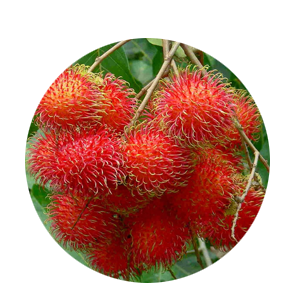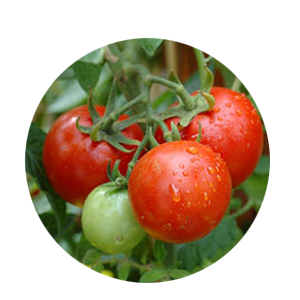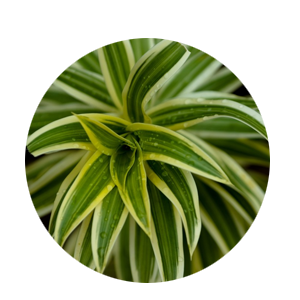Musambi - Grafted - (8x10 bag)

Item Description
GENERAL INFORMATION ABOUT A MUSAMBI Citrus limetta, alternatively considered to be a cultivar of Citrus limon, C. limon \'Limetta\' is a species of citrus, commonly known as mousambi, musambi, sweet lime, sweet lemon, and sweet limetta It is native to South Asia and Southeast Asia and also cultivated in the Mediterranean Basin. Mosambi (sweet lime) juice is a favorite citrus drink in India and Pakistan Musambi is a small tree up to 8 m (26 ft) in height, with irregular branches and relatively smooth, brownish-grey bark. It has numerous thorns, 1.5–7.5 cm long. The petioles are narrowly but distinctly winged, and are 8–29 mm (0.31–1.14 in) long. Leaves are compound, with acuminate leaflets 5–17 cm long and 2.8–8 cm wide. Flowers are white, 2–3 cm wide. Fruits are oval and green, ripening to yellow, with greenish pulp. The pith is white and about 5 mm (0.20 in) thick. Despite the name sweet lime, the fruit is more similar to a greenish orange in appearance. As the name sweet lime suggests, the flavor is sweet and mild, but retains the essence of lime. The lime\'s taste changes rapidly in contact with air, and will turn bitter in few minutes,but if juiced and drunk rapidly the taste is sweet. The flavor is a bit flatter than most citrus due to its lack of acidity. It can be compared to limeade and pomelo. Sweet lime is almost exclusively served as juice, and is the most common available citrus juice in India, Pakistan and Bangladesh. The juice is commonly sold at mobile road stalls, where it is freshly pressed, sometimes served with a salty chat masala or kala namak, unless the vendor is told not to add it. Like most citrus, the fruit is rich in vitamin C, providing 50 mg per 100 g serving.[6]In Iran it is used to treat influenza and common cold. The tree is used for ornamental purposes as well as for graft stock. HELTH BENENIFTS OF MUSAMBI The fruit is rich in vitamin C, providing 50 mg per 100 g serving.In Iran it is used to treat influenza and common cold. Here are some health benefits 1. Aids Digestion: 2. Relieves Constipation: 3. Prevents Scurvy: 4. Peptic Ulcers: 5. Respiratory Problems: 6. Improves The Immune System: 7. Anti-Cancer Properties: 8. Protection Against Rheumatoid Arthritis: 9. Facilitates Weight Loss: 10. Urinary Disorders: 11. Gout: 12. Relief From Motion Sickness: 13. Treatment Of Sunstroke And Dehydration: 14. Beneficial For Pregnant Women: 15. Benefits The Nervous System: 16. Treatment Of Jaundice: 17. Beneficial For Asthma: 18. Relief From Tonsillitis: 19. Other Benefits: 20. Antiseptic & Antibacterial Properties:
Maintanance, Disease Management And Yielding
MAINTANACE OF THE PLANTATION Once a plantation has been established, the work should not be considered finished. It will be necessary, for example, to protect the plantation against weather, fire, insects and fungi, and animals. A variety of cultural treatments also may be required to meet the purpose of the plantation. FERTILIZING Twice a year, in May/June and September/October (after the rains start), all trees get two or three kilos per tree (depending on the size of the tree) of a citrus fertiliser compound which is sprinkled about one metre from the trunk (it must not touch the trunk). This is a mixture of: nitrogen (20 per cent), phosphorus pentoxide (12.2 per cent), potassium oxide (10 per cent), magnesium oxide 2 per cent), and sulphur trioxide (10 per cent). In addition to this, occasionally when trees seem to need it (yellowing leaves or general weakening), they get an additional small amount of magnesium. WATERING AND WEED CONTROL Young musambi trees should be watered regularly until fully established. In dry western climates, water mature trees deeply at least every one or two weeks. Desert gardeners may have to water more frequently. Mulch the soil around the trees to conserve moisture. Weeding is also very important. Remove all weeds 1.5 meter around the plant. PRUNING AND SHAPE OF TREE Every three years, after the fruit has been picked, branches are thinned out to maintain the strength of the trees and to facilitate light and air entering at all places. This includes clearing out the tree\'s interior and suppressing strong vertical shoots. Pruning often requires the removal of some large branches. PEST & DISEASE FOR MUSAMBI TREES Every fruit tree has the future potential for disease and insect damage. Factors such as location and weather will play a part in which issues your tree encounters. If available, disease-resistant trees are the best option for easy care; and for all trees, proper maintenance (such as watering, fertilizing, pruning, spraying, weeding, and fall cleanup) can help keep most insects and diseases at bay. HARVESTING YOUR MUSAMBI The harvest season is usually between June and September, depending on variety. Fruit matures three to five months after flowering.Mangos should be picked before they are fully ripe, at which time they soften and fall. Fruits are usually picked after they develop some red, orange, or yellow color. Mangos will ripen and may be picked when the flesh inside has turned yellow, regardless of exterior color.
- Propogation Method : Grafting
- Plant Climate : Sub Tropical, Normal, Hot, Cool, Tropical
- Plant Height : 1-2 feet
- Plant Weight : 3.5kg
- Plant Polybagsize : 8x10
Related Images
- Botanical Name : Citrus Limetta
- Malayalam Name : Kambilinarakam
- English Name : Pomilo
Use the freshness test to pick fresh and ripe mosambi
Planting Instructions
PLANT THE RIGHT TREE AT RIGHT PLACE Growing space both above and below ground should be considered when selecting a tree to plant. Too often allowances are not made for the increased size of the tree when it matures. Most problems can be avoided by selecting the proper tree species for the available planting space. GENERAL TIPS 1. Plant at least 6 to 10 meter from main overhead utility wires on street or to your home. 2. Plant at least 7 meter from a building. 3. Plant at least 2 meter from sidewalks, driveways, patios and fences. 4. Plant at least 7 to 15 meter from other large trees. 5. Plant at least 7 meter from small trees. 6. Prioritize your tree planting with the sun’s direction to maximize shade by planting on the southwestern and western sides of your home BASIC PARAMETERS TO PLANT A MUSAMBI TREE 1. Soil : Deep well drained loamy soils are the best for the cultivation of Citrus. The pH of soil should be 6.5 to 7.5 and EC of water less than 1.0. A dry climate with about 50 – 75 cm of rainfall from June – September and with well defined summer and winter season is ideal. Sweet orange comes up well in tropical zone below 500 m. The extreme of temperature are necessary for achieving higher yield. 2. Planting Distance : For Commercial Plantation :- 7m x 7m for normal plantations and 6 m x 3 m for high density plantations. Adopt high density planting for higher productivity. For Home Garden: -In a home garden generally we are planting one or two musambi trees along with other species of fruit plants. So it is better to keep minimum 7 meter distance from other plants to plant a musambi tree. 3. Pit size : Minimum 60cm width X 60cm Breadth X 60cm depth 4. Sunlight : 100% sunlight is best but can grow up to 50 % shade 5. Watering: During dry weather, initially water the plant once in two days and after one month of planting water every 7 to 10 days during the first year. TEN TIPS FOR PLANTING A MUSAMBI TREE 1. Dig a hole/pit 3 to 4 times wider than the container (Normally 60cm X 60cm X60cm is recommended). Fill the pit with top fertile soil to allow for proper root growth. Avoid clay type soil to refill the pit. 2. Add 250 gm Rock Phosphate or Born Meal and 3 to 5 kg Cow dung or compost in the top soil of the pit and mix it thoroughly (Thorough mixing of manure with soil is very important because direct contact of manure with the roots of the plant will cause the damage of roots and plant). 3. Make a small hole in the pit and carefully remove the plant from the container/pot or poly bag keeping the soil around the roots intact. Don‘t yank the plant out of the pot or poly bag as this can separate the roots from the tree. Poly bags can be easily removed by cutting it by a knife and pots can be removed easily by hitting slightly at the top edge of the pot. 4. Set the plant in the middle of the hole. Avoid planting the tree too deep. Keep the base of the trunk is slightly above ground level. Using some soil, secure the tree in a straight position, then fill and firmly pack the hole with the original soil, making sure there aren‘t any air pockets. 5. If the plant is Grafted or Budded make sure the grafted or budded portion of the plant is above the soil. Do not allow to touch the grafted or budded portion in the soil as it burns the skin of the plant. 6. Create a water-holding basin around the pit and give the plant a good watering. After the water has soaked in, spread protective mulch 2–4 inches deep in a 3-foot diameter area around the base of the tree, but not touching the trunk. Also provide a stich as a support for the plant, if needed. 7. The soil and mulch around your plant should be kept moist but not soggy. During dry weather, initially water the plant once in two days and after one month of planting water every 7 to 10 days during the first year. 8. Remove any tags and labels from the tree as these will affect the tree as it grows. You may need to prune any broken or dead branches. For Budded or Grafted plants it is very important that do not allow the growth of off shoots under the grafted/budded portion. Allow the growth of budded/grafted scions only. 9. Do not use chemical fertilizer or any other chemicals on your newly planted trees. Such products will kill your young trees. If needed you can add chemical fertilizers in small quantity (generally below 100gm) after two to three months of planting with sufficient irrigation. 10. Do not over water or allow rain water so much that you see standing water in the pit area of the plant. It will damage the plants roots and results the die of your plant.













